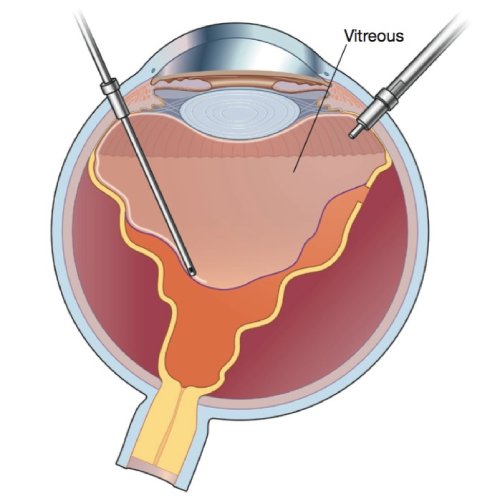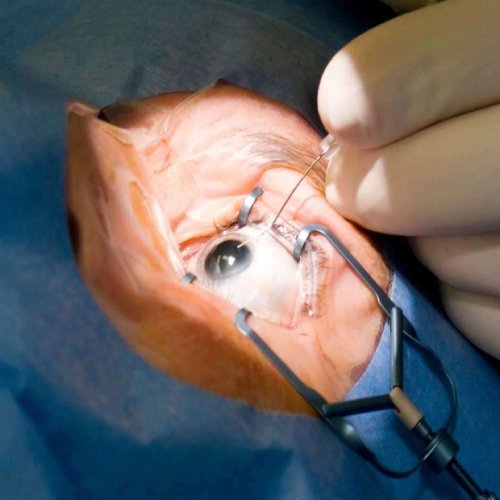About Vitreoretina Services
Vitreoretina services focus on the diagnosis and treatment of diseases and conditions affecting the retina and vitreous body of the eye. These specialized services are crucial for managing complex retinal issues that can impact vision and eye health.
Symptoms of Vitreoretina
- Difficulty with depth perception
- Discomfort in bright
- Inconsistent vision clarity
- Visual distortions
- Reduced visual acuity
- Eye strain
- Loss of central vision
- Shadowy or dark areas in vision
- Decreased ability
- Increased bright lighting

Causes of Vitreoretina
- Congenital factors: Some individuals are born with cataracts or develop them during childhood due to genetic disorders.
- Metabolic disorders: Conditions like Wilson’s disease, which affects copper metabolism, can lead to cataract formation.
- Previous eye surgeries: Surgical procedures on the eye can result in secondary cataracts.
- Hormonal changes: Hormonal fluctuations, particularly during menopause, can influence cataract risk.
- Nutritional deficiencies: Lack of antioxidants, especially vitamins C and E, may increase cataract risk.
- Chronic kidney disease: Kidney problems can lead to metabolic changes that contribute to cataract development.
- High blood pressure: Hypertension has been linked to an increased incidence of cataracts.
- Obesity: Higher body mass index (BMI) has been associated with a greater risk of cataracts.
- Corticosteroid use: Long-term systemic or topical corticosteroid use can lead to cataract development.
- Exposure to environmental toxins: Prolonged exposure to certain chemicals or toxins can increase the risk of cataracts.

Our Vitreoretina Treatment Options
- Observation: In early stages, monitoring the cataract without immediate intervention can be appropriate.
- Visual aids: Using magnifying glasses or specialized devices to improve vision temporarily.
- Topical medications: Research is ongoing into eye drops that may help slow cataract progression, though they are not widely available yet.
- Surgical techniques: Newer methods, such as femtosecond laser-assisted cataract surgery, offer precise lens removal.
- Lens exchange: In some cases, replacing the natural lens with a synthetic one can provide better vision.
- Corneal transplant: In rare cases where cataracts are associated with corneal issues, a transplant may improve vision.
- Refractive lens exchange: A procedure similar to cataract surgery, where a clear artificial lens is implanted to correct vision.
- Multifocal or toric IOLs: Using specialized intraocular lenses that correct for astigmatism or provide multiple focal points.
- Routine lifestyle adaptations: Encouraging patients to avoid driving at night and using brighter lights for reading.
- Nutritional counseling: Advising on a diet rich in antioxidants to potentially slow the progression of cataracts.
When You Need
Treatment Vitreoretina



Diabetic Retinopathy: A complication of diabetes that affects blood vessels in the retina, leading to vision loss if untreated.
Retinal Detachment: When the retina peels away from the underlying tissue, causing loss of vision that can become permanent without prompt surgery.
Macular Degeneration: Age-related degeneration of the retina, leading to loss of central vision.
Macular Holes: Small breaks in the macula that cause blurred or distorted vision.
Vitreous Hemorrhage: Bleeding into the vitreous, often due to retinal tears or diabetic retinopathy, causing a sudden decrease in vision.
Vitreous Detachment: Occurs when the vitreous pulls away from the retina, which can sometimes lead to retinal tears or detachment.
Frequently Asked Questions
Vitreoretinal surgery is used to treat various conditions, including:
- Retinal detachment
- Macular holes
- Diabetic retinopathy
- Epiretinal membranes
A retinal detachment occurs when the retina separates from the back of the eye, which can cause permanent vision loss if not treated promptly.
A macular hole is a small break in the macula, the part of the retina responsible for sharp central vision. It is often caused by aging and changes in the vitreous, the gel-like substance inside the eye, which can pull on the macula and cause a hole to form.
Diabetic retinopathy is a complication of diabetes that affects the blood vessels in the retina, leading to vision loss. Treatment options include:
- Laser photocoagulation: A laser is used to seal leaking blood vessels.
- Vitrectomy: In advanced cases, this surgery removes blood or scar tissue from the vitreous.
24 / 7 HOURS SERVICE
